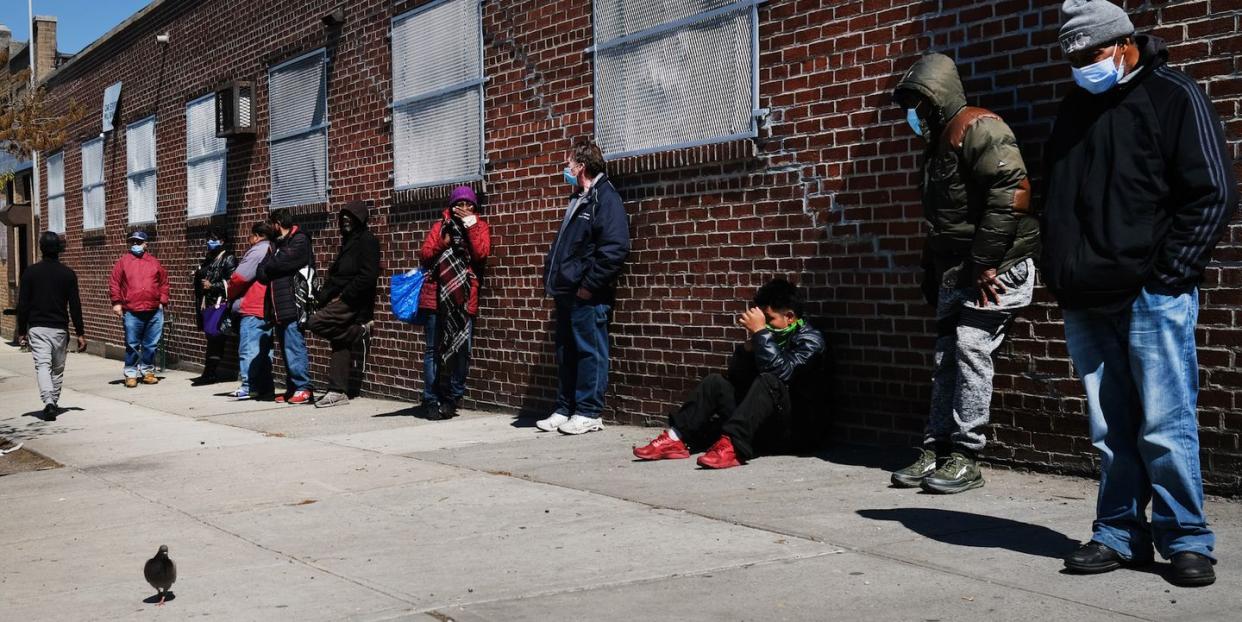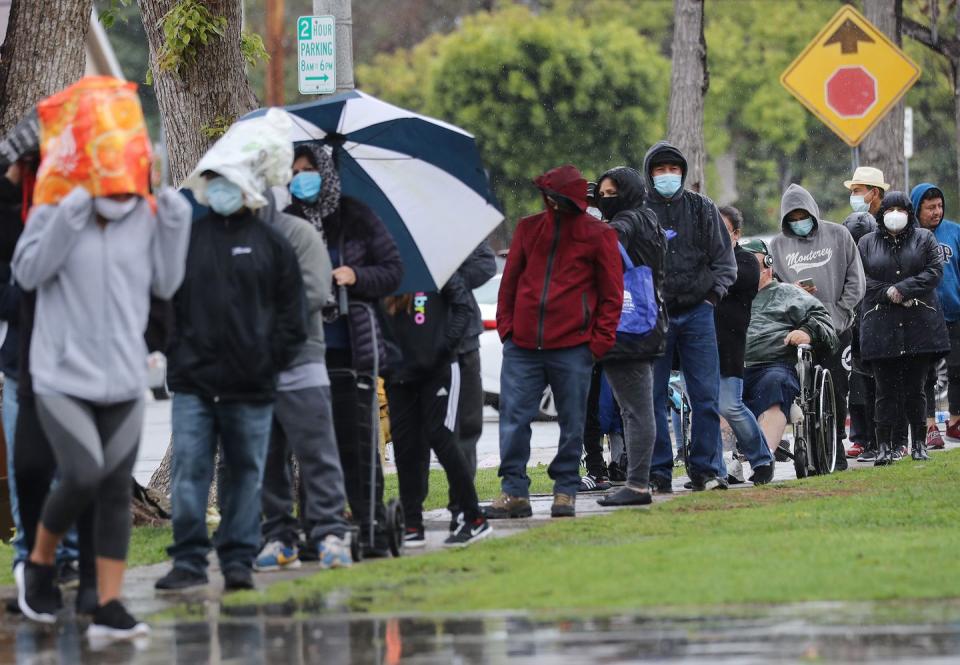The Working Class Is Bearing the Brunt of Catastrophe—Again—With the Pandemic

When the Black Death swept through Europe in the 14th century, killing between 30 and 60 percent of the people who lived there, it was greeted by one French chronicler as a great equalizer. "Neither the rich, the middling sort, nor the pauper was secure," said Gilles Li Muisis, "each had to await God’s will." Except that wasn't exactly true: while no one was secure, it seems rich folks were far more likely to find themselves in God's favor. Not exactly how Jesus drew it up. "Perhaps 27% of wealthy English landowners appear to have succumbed to plague," Science tells us, "whereas counts of rural tenant farmers in 1348 and 1349 show mortality rates mostly from 40% to 70%." It pays to have money.
All this might sound a bit familiar. When the novel coronavirus pandemic emerged and, soon enough, brought the whole world to its knees, some thought there was another great equalizer on the scene. No one is immune to COVID-19, after all, but it does seem that once again, the landed gentry—now d.b.a. bankers and tech titans—are getting a better deal. As wealthy New Yorkers fled for their vacation homes in March, and the white collars that remained had salaried jobs that allowed them to work from home, the full weight of the pandemic landed on working-class communities where people are more likely to be "essential workers." This is a quintessential American euphemism for "people we refuse to pay a living wage but here's some gratitude." These workers are disproportionately people of color, a dynamic of racial inequity which has been replicated across the country.
But it's not just that people with less income are more likely to get the virus. They are also most likely to have lost their incomes amid the accompanying economic turmoil. The Federal Reserve announced in May that nearly 40 percent of Americans with a household income below $40,000 had lost their jobs, whether they were laid off or furloughed. The situation may have improved slightly with the generally improving jobs reports in the time since, but already it looks like those gains will be erased by a second surge of cases, particularly across the South and Southwest. The June jobs report, which was very positive, is in all likelihood already out of date. States like Florida, Texas, and Arizona are careening towards having to close up again, having completely failed to use the months since New York's catastrophe to prepare themselves, a development which will not be good for low-wage workers in restaurants and beyond.
Already, the specters of hunger and homelessness loom large. In New York, at least two million families are facing food insecurity every day. The strain on food banks is severe: at some larger distribution sites, the New York Times reports, "people line up as early as 5 in the morning and wait as long as six hours." Soup kitchens that had been serving 300 meals a day are now distributing 900. The miles-long lines of cars elsewhere in the country—the food-bank lines, not the testing lines—serve to illustrate the scale of the suffering.
And now, across the country, the evictions have begun in earnest. It's hard to see what's changed since April, when I reported on New York's rent strike movement and its spread to other cities. New York Governor Andrew Cuomo, like pretty much every other executive around, has resisted calls to cancel rent and provide relief to smaller landlords—which, in fairness, would probably be costly enough to require federal intervention. But beyond the moral atrocity of evicting someone during a pandemic, it's just a practical absurdity: people who can't work can't pay. And restaurants and other businesses operating at limited capacity—at best—can't pay in full.

Meanwhile, having failed to contain the pandemic using methods—like widespread testing and tracing, centralized quarantine, and the like—that have allowed other countries to reach a New Normal equilibrium, the national government of this country is basically giving up. Congress has so far passed $3 trillion in aid, but Senate Republicans under Mitch McConnell have basically shut up shop. House Democrats passed a $3 trillion relief bill in May that the Senate refuses to take up in any form, even as boosted unemployment benefits are set to expire and state and local governments face a fiscal cataclysm. House Democrats also passed a $1.5 trillion infrastructure bill in June, which would create some good jobs while fixing roads and bridges and expanding broadband Internet access. It's dead on arrival in the Republican Senate.
But nobody has given up on fighting the pandemic quite like the president. The Washington Post reports that "White House officials also hope Americans will grow numb to the escalating death toll and learn to accept tens of thousands of new cases a day," pushing a Chip Dillerian line that schools and businesses can just reopen even as the virus explodes throughout the country. (Again, other rich countries have this under much better control right now.) The president sees the pandemic as a "political loser," so he's just not going to talk about it. Certainly, he won't be wearing a mask. This is legitimately delusional, an outgrowth of his lifelong belief—which, in fairness, has gotten him pretty far—that he can mold the contours of reality to his liking.
But more than that, it would be foolish to think the current collision of mass suffering and mass demonstrations for racial justice in the streets are entirely unrelated, or that they could not come together in a way that is politically disastrous for the current regime. “Bioarchaeology and other social sciences have repeatedly demonstrated that these kinds of crises play out along the preexisting fault lines of each society,” Gwen Robbins Schug, a bioarchaeologist at Appalachian State University, told Science of pandemics. 40 years of deliberate policy have created an American underclass, disproportionately nonwhite, many of whom the current cataclysm has brought to a breaking point. It has revealed the fault lines. This cannot go on.
But it appears the president is just going to do racism, even as it so perceptibly falters as a strategy. He's hemorrhaging support in the polls, and not just with the folks bearing the brunt of this medical and economic catastrophe. He's losing ground with older white suburbanites, desperately trying to get them back with apocalyptic doom about Confederate monuments. Some of his allies are doing the same, apparently in the belief that racism and grievance can overcome fear of death. In their perpetual race to demonstrate liberal elitists are out of touch with the concerns of ordinary Americans, the Trumpists have now demonstrated just how painfully removed they are from the lived experience of many people during this pandemic. Even the rich ones.
You Might Also Like

